Deb Vanasse's Blog: Book Birthday!, page 11
February 18, 2014
Writer as Creative Entrepreneur: A Guest Post by Natalie Wright
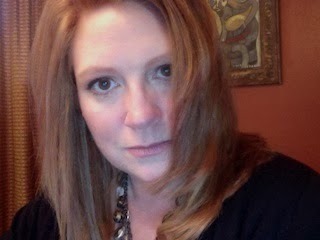 Natalie WrightI am a creative entrepreneur. It’s not something I dreamed of being. When I was a little girl, when people asked, “What do you want to be when you grow up?” I said, “I want to be a writer.” I never said, “I want to be a creative entrepreneur.” Yet a creative entrepreneur is exactly what I have become.
Natalie WrightI am a creative entrepreneur. It’s not something I dreamed of being. When I was a little girl, when people asked, “What do you want to be when you grow up?” I said, “I want to be a writer.” I never said, “I want to be a creative entrepreneur.” Yet a creative entrepreneur is exactly what I have become.Until a few weeks ago, I’d never even heard the phrase creative entrepreneur let alone know that I was one. Recently I was asked by three different bloggers to write a post on the subject of the creative entrepreneur (CE for short). That’s when you know a topic is hot or on people’s minds.
My first question was, “What the heck is a creative entrepreneur?”
John Hawkins defines a CE as a person who “uses creativity to unlock wealth that lies within themselves rather than [through] external capital.” Wikipedia says that CEs “are investors in talent – either their own or other people’s.” Hawkins distinguishes CEs from freelancers. Freelancers, notes Hawkins, think in terms of finding more work. CEs think in terms of creating opportunities.
Harvard economist Richard E. Caves is oft quoted on the subject. Writing in past decades, he noted a distinction between “artists” and “gatekeepers” with gatekeepers deciding on the potential value of the artists work. Now writers are, increasingly, bypassing the gatekeepers and taking their work directly to readers. Now more than at any time in the recent past, writers are taking on the dual role of not only being the creative artist, but also becoming businesses to produce and sell their work.
Just so we’re clear, being a CE is nothing new. For as long as humans have been creating, there have been CEs. I recently spoke with a writing and publishing veteran, Dan Gutman. Dan, a children’s book author, had his first book published in the 1980’s and currently has over 100 books in print. When I spoke with him about writing, publishing and author marketing, it was clear that Dan’s isn’t an “artist” sitting in a coffee shop, typing passionately away while the nasty business of selling his work is taken care of by a benevolent publisher. Dan’s advice to me – and one that has become my mantra – was, “Bust your ass. Every single day.”
Early on in Dan’s career, he took marketing into his own hands and visited as many schools as he would have him. He gave school talks for free and met and befriended teaches and librarians, i.e. people who were in a direct position to influence his would-be audience. That one librarian/teacher/school/reader-at-a-time approach was a successful strategy.
Dan is a CE. He not only uses his creativity to produce a product (his books), but he uses his creative energy to think of ways to market (i.e. sell) his product as well. I don’t want to discount the help that his publishers may have given him. Dan noted to me that he has had more than one publisher and some of his books are out of print and others are not, and that that has more to do with the publisher than it does with Dan. But Dan used his creative entrepreneurial genius to create his own success. He took control of his own destiny and he did it before the surge in self-publishing or the existence of social media. Though Dan built his career by taking himself and his books on the road, he now leverages social media to maintain his readership just the way you’d expect a CE to do.
And that highlights another characteristic of the CE: adaptability. The publishing world is changing rapidly and true CEs see the change as opportunity rather than crying in their Malbec and bemoaning the loss of the “good old days.”
Being a creative entrepreneur means you don’t get stuck in one way of doing things. It’s about being open to try new things. It’s about collaborating with others who have talent and skills you can leverage to make your project a success. Being a CE means that you are willing and able to drop something (or someone) that isn’t working and move on. You are agile and you pursue new opportunities that are exciting to you or show promise.
I like this quote from Mark McGuinness. “The only real security lies in taking an entrepreneurial approach to our own careers, by taking responsibility for developing our skills, building our networks and reputation, and creating opportunities for ourselves.”
Perhaps for writers, this has never been a truer statement than it is today.
Action Item : Take five minutes and brainstorm 10 things you can do this year to increase the reach of your author brand. Use the same creativity you apply to your writing and think outside the box. Try some things you haven’t tried before.
Are you a creative entrepreneur? And if so, did you set out to be one or did you find yourself in the role by happenstance?
Natalie is the author of The Akasha Chronicles, a young adult paranormal fantasy trilogy. When not writing, blogging, Facebooking, Tweeting, Wattpadding or eating chocolate, Natalie nurtures her young daughter, plays with her two young cats, and feeds her dog too many treats.
Natalie enjoys walking in the high desert, snorkeling in warm waters, travel, and excellent food shared with family and friends. She was raised an Ohio farm girl, now lives in the desert Southwest, and dreams of living in a big city high rise.
Natalie enjoys chatting with readers, so stop by and say hi:
Blog: http://www.NatalieWrightsYA.blogspot.comTwitter: http://www.Twitter.com.NatalieWright_Facebook: http://www.Facebook.com.NatalieWright.AuthorGoodreads: http://www.goodreads.com/author/show/468945.Natalie_WrightYouTube: http://www.youtube.com/user/WritesKidsBooksWattpad: http://www.wattpad.com/user/NatalieWright_Pinterest: http://pinterest.com/natwrites/e-book: http://www.amazon.com/dp/B00I2U3DWWPaperback: http://www.amazon.com/Emilys-Heart-Natalie-Wright/dp/1493697587/ref=tmm_pap_title_0
Published on February 18, 2014 08:00
February 11, 2014
Author Tips: Collaboration
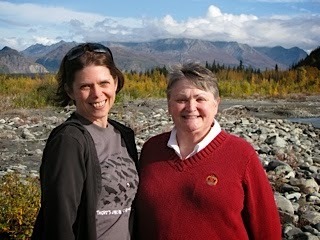 Gail Giles and I at the Matanuska River in Alaska
Gail Giles and I at the Matanuska River in AlaskaTomorrow, our book officially meets the world.
Our book. No Returns .
It happened because my co-author, Gail Giles, is a very cool person. Her debut novel, Shattering Glass, was an ALA Best of the Best Book, a Book Sense 76 selection, and a Booklist Top 10 Mystery for Youth selection. Her second, Dead Girls Don’t Write Letters, was an ALA Top 10 Quick pick and a Book Sense 76 selection. She’s got over 12,000 ratings on Goodreads; this week, it happens that she’s in the top fifty followed people there.
Gail and I got acquainted through writing, and we’d known each other for a number of years before we began playing around with co-written titles. After a couple of false starts, we ran with an idea Gail came up with, for a middle grade/YA novel about three boys in a band who accidentally call up the devil.
While vacationing in Cabo, we wrote the first few chapters of No Returns , then finished the book through a series of phone calls and emails. We fell in love with the boys in the band, and we even developed an affection for a certain little demon named Fred. I’m glad we decided to make this a series, because writing the sequel is proving every bit as fun as writing the first book.
If you’re thinking of co-writing a book, here’s some advice based on our experience: Make sure you’re comfortable and secure in your friendship before you tackle a project together. Collaboration works best when you share mutual trust and respect. If one (or both) of you has control issues, you’re likely bound for an unpleasant ride.
No one’s the diva. Be honest with one another. Without feelings getting hurt, you have to be able to tell your co-author if you feel things are going in the wrong direction. Writing is hard work, but collaborating should be fun.
Have a system, but don’t be rigid about it. Play off one another’s strengths. While both authors need to be open to alternatives and critiques, they should avoid micromanaging the project. Now that Gail and I have collaborated successfully on one book, we’ve found a sort of rhythm, with each of us writing where we feel inspired and punting to the other where we get stuck. Much like a marriage, the contributions of each person will never be entirely equal.
Agree on the terms. Before you get in too deep, decide what will happen if one of you feels it’s not working. Who’ll have rights to the draft if the book never makes it to completion? How it will be placed and marketed if it does?
At some point, bring other perspectives to the project—agents, editors, and/or beta readers. Books can be a little too much like babies: as their proud “parents,” you risk overlooking flaws.
If you’d like to ask Gail about what it’s like to co-author a book (or anything else), she’s hosting an “Ask Gail Giles” Q & A at Goodreads on Thursday, Feb. 13.
It’s a little early for use to tell how our book will be received, but so far, we like what we’re hearing:
"Turn this book up to eleven! It puts the buzz in Beelzebub and the power in power chords. A musical, lyrical tale that must be read.”Arthur Slade, author of The Hunchback Assignments
“A powerful story told in an equally powerful voice, with characters you love and root for from the very first pages. A novel of friendship, love and guts about three kids who refuse to surrender—brilliant and strikingly new!”Terry Trueman, Printz Honor Author of Stuck in Neutral
“The first movement in an ambitious song cycle of a tale” Kirkus Reviews
To celebrate the official launch of No Returns, we’re offering the Kindle version at $2.99 from Feb. 12 through Feb. 14.
Published on February 11, 2014 08:00
February 4, 2014
Marketing Books: Lessons from a Side Trip
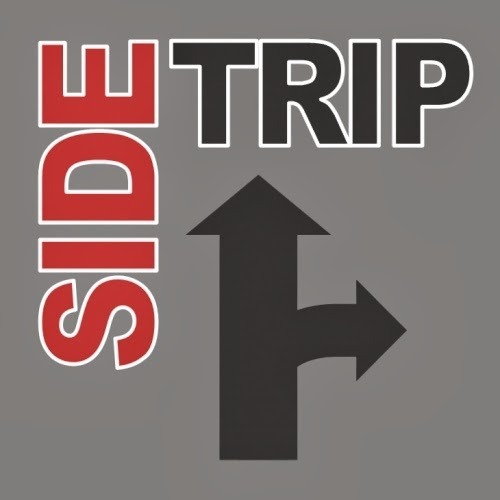
Something I seldom bring up in literary circles: For eight years, I sold real estate. My friends and family know it, of course, and so do my former clients and colleagues, but I don’t mention it among fellow writers because frankly, I know some will think less of me for it.
“Scum of the earth.” That’s how my sister-in-law once described those who made their living as I did.
My grand vision for how my life would unfold was that I’d teach for twenty years, retire, and write books. I’d even made sure the house had a short-term mortgage so that payments would end shortly after I retired. Another plus: By my planned year of exit, my first two novels had come out with major publishers.
Still, like most grand visions, mine skidded sideways a bit. I hadn’t factored in ridiculous spikes in college tuition as my kids prepared to enter college, nor a (now ex-) spouse who determined we needed to build a new house right then, which of course meant a new mortgage.
So I did what we all do when our grand visions go a bit sideways. I recalibrated. At a conference, I’d been on a panel with an author who sold real estate on the side. It seemed like something that could provide income with enough flexibility that I could move ahead with my writing.
Income, yes. Flexibility, not so much.
As the market boomed and my business grew, the sixty-hour weeks were the short ones. I kept publishing, but I wasn’t learning and growing as a writer the way I would once I bowed out of real estate, after my kids were through college.
No matter what the side trip, it’s only wasted if we choose to think of it that way. Aside from bankrolling some needed income (if you want to get rich, sell houses, not books), I learned business strategies from real estate that I now use as an author.
Not that a house is a book, mind you. There are huge differences in what you’re marketing (service vs. product/art); what’s at stake for the buyer (a $24.99 investment vs. $249,900); discoverability (if only there were an MLS for books); pricing (it’s everything in real estate; not so with books); and supply (last I heard, 3500 new books published a day in the US).
Differences aside, my side trip taught me a lot about marketing books, whether traditionally or independently published:
You can stage a house all you want, but if it’s fundamentally shoddy, you’re going to have a hard time with the sale. Ditto for books. The best cover design, the cleverest query, the best elevator pitch—none of that will compensate for poor writing. As long as there’s some way for people to find it and it’s priced properly, quality always sells. If you want to be treated like a professional, act like one. Don’t go around shouting up your books and berating those who don’t share your high opinion of them. Capitalize on your strengths, but don’t try to be what you’re not. Whether is developmental editing or proofreading or cover design, hire out to others the work you know you can’t do well yourself. Don’t fall for every gimmick that comes along, or do something because everyone else does. Acquaint yourself with the options, review your budget, and invest your money and energy into the ones that are best for you and your book.Know your audience. Target marketing is generally more effective than a general blitz. Don’t fall asleep at the wheel, but don’t let marketing consume you, either. Whether we’re talking real estate services or books, word of mouth is always the best advertising, and you get that by doing what you do well. Period. Avoid this big mistake made by lots of new real estate salespeople (and authors): getting so wrapped up in closing the current deal that you forget you’ll need another and another and another if you truly want to make this a career. Continual on-the-job education is a must. Once you’ve decided you know it all, you’re pretty well sunk.
Published on February 04, 2014 08:00
January 28, 2014
Writing Advice: First Thoughts Aren’t Always Best
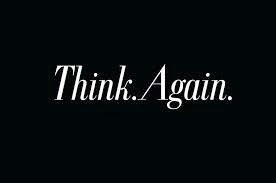
First thoughts aren’t always best thoughts. When I taught collage comp, I repeated this mantra again and again.
Creative writers would also do well to heed this simple advice. As proof, I offer two of my forthcoming books, each of which strayed a long ways from my original vision, and each of which is better for the journey.
One is Cold Spell, a novel that probes the conflicting and overlapping desires of a mother and daughter who move north one summer because of the mother’s obsession with a glacier. When I first started drafting the book, it was set in Fairbanks during a cold snap, and it featured a murder and a woman with Alzheimer’s.
The other is Wealth Woman , a nonfiction narrative about Kate Carmack that explores the Klondike gold rush from the perspective of those who were there first, Alaska Natives and the First Nations of the Yukon. Originally, I’d plotted the book as a love story, and then as the interwoven tales of four women, two of them Native and two of them not.
How can you improve on the impulse to run with your first ideas? Here, five strategies:
Choose the best of many. Capture your first thoughts. Then consciously and strategically push past them. Fill a page (or five, or ten) with every twist, turn, and approach you can think of. Don’t evaluate. Brainstorm.
Use both sides of your brain. Once we seize on an idea, our left brains try to push straight through from point A to point Z. Don’t allow this. Visual brainstorming strategies like mapping ensure that the right brain, with its links to your subconscious, doesn’t get left out of the process.
Wait. Walk, sleep, shower. Repetitive activities and changes in scenery will turn your subconscious loose on the ideas you’re mulling. If you’re going to outline, don’t do it too soon, or at least make a pact with yourself to entertain plenty of changes along the way.
When you think you’ve landed on the absolute best approach to your book, write two or three pages using one or more of the angles you plan to discard. This small investment of time and energy will help you be sure you’ve found the right shape and direction for your project.
Let go. No angle or direction is sacred. Often your first thoughts are only an opening, a way for you to reach through to the real touch points of your project.
Published on January 28, 2014 08:00
January 21, 2014
Where to Publish: Why Writers Might Want to Think Small

Many years ago, my first novel came out from Lodestar, an imprint of Dutton, a subsidiary of Penguin. Even then, before it merged with Random House, Penguin was one of the Big Boys. The perfect place to land your first publishing contract.
Or not. I loved my editor, but Big Boy Publisher dumped her and her imprint shortly after my novel came out. They failed to put my book in the proper catalog. They could have cared less about marketing it in Alaska, where the story was set, and where we get upwards of a million book-buying visitors a year.
A few years later, a regional press made an offer on another one of my books. I was leery. It seemed like a step down. But the publisher assured me the marketing would be good and the sales would be strong and the book would stay in print.
He was right. Not only is that book—and three others I sold to the same small press—still in print, but they’ve found five times the readers (and generated proportionately that much more in royalties) than my two books that came out with the Big Boys.
More and more, I look to small presses (including my own) not as a last resort but as my first choice. Here, six reasons why: In general, small presses aren’t chasing “sure thing” celebrity deals. They’ll take more risks both in what they publish and the terms they offer. I placed my forthcoming novel Cold Spell with a small press because they let me keep all except English print rights. That means I’ll produce and market my own digital editions, which I’m convinced will result in more print sales for them.
While free to innovate, small presses tend to be backward-thinking in a way I appreciate: They pay a lot more attention to what’s on the pages of the books they produce than what’s on the pages of their balance sheets. Does that make publishing with them more precarious than with the big boys? Maybe. But I’d rather cast my lot with a small group that cares a great deal about good books than with a large group controlled by corporate concerns that they can’t override.
A small press works like a team. They know and promote their books. After hearing from so many on the staff of the press that’s handling my book, I wouldn’t be surprised to get an email from the custodian saying that he, too, loves my novel.
Though a small press may be as understaffed as a large one, in general I’ve found them more responsive. With the Big Boys, it’s easy to feel shuffled around like you do sometimes when you’re buying a car—like it’s a game in which you’re the pawn being nudged from one person to the next in what ends up being a long way of saying sorry, our hands are tied.
The pressure’s off. Small presses don’t set authors up to fail by setting bars that keep changing and in the end are impossible to reach. Midlist authors—one whose books sell steadily but don’t bust the charts—are just fine with them. And guess what? Books stay in print, so authors sell more than they would with a Big Boy who remainders them sooner rather than later.
Small presses are more agile, adjusting more readily to new paradigms, as with the growing trend of readers connecting directly with authors.
All well and good, you may say, but I’ll bet she’d jump at a Big Boy deal if one fell in her lap: more money, more marketing, more bragging rights.
Consider, yes.
Jump, no.
I’d weigh everything I’ve said here against the money and the marketing and whatever short-lived fun I’d have saying a particular book was picked up by a Big Boy, and then I’d choose the path was best for that title.
Published on January 21, 2014 08:00
January 14, 2014
Discoverability: Media Attention for Your Book
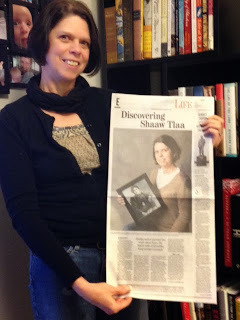
Shortly before Christmas, I found an email in my inbox from a reporter for the Globe and Mail, the largest newspaper in Canada. He wanted to know my thoughts on who discovered gold in the Klondike.
In case you’ve missed all the hype about the Klondike fueled by the upcoming Discovery mini-series featuring Game of Thrones star Robert Madden, the Klondike was the largest gold rush in recent history. The question of who first discovered gold there is more complicated than it might seem on the surface.
The reporter asked my opinion because he saw my name on the website for the Dawson City Museum, where I’d spoken in August as part of a pre-publication tour for my forthcoming book Wealth Woman: Kate Carmack and the Last Great Race for Gold . I typed a response that explained what I thought and my sources.
What happened next? A phone interview with the Globe and Mail reporter, followed by an article, and a request to contact him when the book comes out so he can do a follow-up story. Interviews with Canadian Broadcasting Company reporters (CBC is the NPR of Canada), which resulted in a web articleand a “live” radio interview with me by phone. (They also asked me to let them know when the book came out.) A reprint in an online paper that gets stories from a CBC news service. A nearly full-page article in the largest newspaper in my state.
Quite the flurry of attention, which made me especially happy for the subject of my book, a Tagish Indian woman whose story was misrepresented in life and after her death.
Here, a few tips for authors on getting and handling media attention: One thing leads to another. When the ball starts rolling, expect more.A landing page on the web is handy for directing attention even before your book is finished, especially if it’s nonfiction.In the news business, no one likes getting scooped. As soon as I knew the Canadian media were running with the story, I contacted my local paper to find out if they wanted to do a story. They did—and it was more thorough than any of the other coverage.Make it easy. Besides your informative website, be succinct yet thorough in your interview responses—especially important if it’s a radio or television story.As the stories break, make pre-emptive contacts with people your story might impact. In my case, this meant emailing two more experts on my topic whom I’d been meaning to contact anyhow. Both were glad to hear directly from me instead of reading about my book in the papers.Thanks the reporters (privately) for their work, and if there are substantive errors of fact, let them know (politely) for the record. Keep in mind, though, that a news piece can’t capture the whole story (that’s why you’re writing the book), and that their angle on the story might be different from yours. Some headlines credit me with "uncovering" the "true origins" of the gold rush when in fact all I did was find an additional source to go along with those already credited by many, something I tried to make clear in the interviews.As with book reviews, I don’t recommend responding publicly to any comments on the coverage. If people have questions, you’re likely easy enough to find online. And that’s another side benefit of media coverage—mine has yielded new sources as well as readers who want to know when the book will come out (soon, I promised them, soon!).Remember news cycles are short. Just as you’re getting used to opening your inbox to another query, they’ll stop. That’s the nature of news. Grab the links to the stories and post them on your website for posterity.
Published on January 14, 2014 08:00
January 7, 2014
Publishing 2014: Forecast from the Trenches
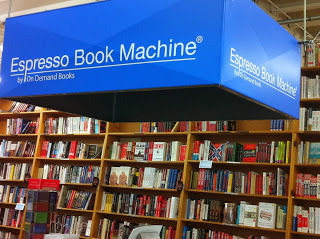
I have no crystal ball. I’m not clairvoyant. And I live in Alaska, pretty much as far as a writer can get from the Right Coast publishing industry without needing a passport. So even though I’ve published a few books, I can hardly claim to be in the know when it comes to the publishing industry.
Nevertheless, I try to keep up where I can. And from the trenches, the boots-on-the-ground view is generally clearer. So, from here in my office, where fingers meet the keyboard, I offer my for-what-they’re-worth thoughts on trends in publishing for the coming year. Amazon rules. I believe the estimates I’ve seen recently about the big retail giant owning some 92% of the digital book market. Love them or hate them: they’re here to stay, and they’re doing a whole lot of things right, especially when it comes to making it easy for writers to find readers and readers to find books. I expect their digital market share will only increase. The self-publishing stigma will continue to fade. The move toward independent publishing that began with genre fiction will spread to literary, nonfiction, and children’s writers. Forward-thinking agents and editors will continue to be proactive about finding ways they can work with independent and hybrid authors. Head-in-sand positioning will continue among the rest. Amazon may dominate sales, but it won’t replace indie bookstores. With the trend to think small and buy local, indie bookstore resurgence will continue as long as booksellers remain proactive about changing markets and technologies. That means more Espresso Book Machines like the one I saw at Powells Books last fall. The man running it predicted that within the decade, stores like Powells will stock only used books and brand new releases. Everything else, he said, will come off the machine, which would mean the whole convoluted book distribution and returns model is in its death throes. In response to changing markets, smart indie booksellers will also align themselves with top-notch indie writers. Authors will continue to connect directly with readers. Those who turn out poor quality work will get discouraged by lack of readers. Those writing good quality books will gain readers. The author services industry will reach a tipping point. There are only so many ways to wring money out of writers, especially when Amazon makes it so easy to do it yourself. As readers demand the best of authors, cover design, editorial, and proofreading services will continue to flourish. Other brokering-type services, not so much. The pricing of digital books will continue to be mixed. High prices on ebooks released by traditional publishers, with proportionately little going to authors, will sustain the Big Five for a while longer, but as readers discover exemplary books from independent authors at one-third the price of e-books from traditional publishers (with those authors making more per sale than they would through a traditional contract), the market will shift. There will be fewer free e-books, and increasingly, traditional publishers will figure out that occasional discounts on e-books help sales in the longterm.Small presses will flourish. They’re responsive and able to cut deals that allow hybrid authors to manage their digital rights while the publisher handles the print releases. Bestselling authors will continue to resist changes in a marketplace that once favored them. Formerly bemoaned as “midlist,” the rest of us who’ve been publishing without hitting NYT bestseller status with every book will continue to enjoy new readership and income as hybrid authors. Emerging authors will need coaching in both craft and finding their readers. They’ll need to know how to work all channels, from the traditional to the innovative.How do my predictions measure up with industry insiders? You'll find the forecast from inside here.
Published on January 07, 2014 08:00
December 31, 2013
Writing and Publishing: Strategies for Success in 2014

Reflection time. As year-in-review lists come flying at us, I hope you’re doing your own, aimed specifically at your journey as a writer.
I love looking back at the planning I do at the start of each year as a writer. Inevitably there are things I’d hoped to accomplish but didn’t. No worries: Those roll onto next year’s list, unless I’ve decided they’re not of interest any longer. I’m usually pleased to discover that I also got done a few things I hadn’t meant to.
I’ve been at this awhile. My first book came out through a Penguin/Putnam imprint in 1997, predating by fifteen years the Random Penguin merger. With books thirteen and fourteen coming out in 2014, I hope I’ve learned a thing or two along the way. The fun part? I’m still learning.
As you look ahead to a new year of inspired writing and publication, here are a few strategies worth considering: Apply the 80/20 rule to your writing life. Spend 80% of your writing time on creative efforts, and limit your production and promotion to 20%. When you engage with your fellow writers and potential readers, let 80% of what you say be about others, with no more than 20% about yourself. Quit putting off the writing you’d like to do. The busiest people tend to accomplish the most. Whatever time you have to write is enough to get started. If you have only ten minutes a day to write, write ten minutes a day. Set goals. Decide what success looks like to you. Don’t measure yourself against others, and don’t set your goals in terms you can’t control, like which agent will take you on or how much your advance will be for your book. Your goals should reflect a healthy balance in your life. In addition to the writing goals I set for myself last year, I included goals like these: listen better; be attentive; cultivate a generous spirit; show daily gratitude; enjoy poetry daily; study aspirational writers; wait. Keep it simple. Fancy apps and leather-bound journals and expensive pens and mahogany desks are nice, but they won’t make you a writer. I work each year from a set of college-ruled, spiral notebooks that I buy for ten cents each at back-to-school sales in August. They’ve served me beautifully. Keep your focus on craft. Who’ll buy and read your work is in many ways beyond your control. What you can control is the quality of your work, and your overt efforts to continually improve at your craft. Maybe you can’t afford workshops or conferences, but the masters are all free for the borrowing at your local library. Cross-posted at www.49writers.blogspot.com.
Published on December 31, 2013 08:00
December 24, 2013
Ten Ways of Giving, and Why They Matter for Writers

In the mad rush of the holidays, it’s easy for writers to forget all they’ve been given. Imagination. The versatility of language. A world of ideas. The joy of discovery.
Now, about giving back.
It’s been proven time and again that those who have the least give the most. And really, what’s not to like about giving? It even makes you healthy.
“People whose happiness comes primarily from doing good for others, rather than from hedonistic self-satisfaction, show a much more favorable gene profile, with less inflammation and better antibody and antiviral activity,” says Steven W. Cold, professor of medicine in UCLA, in a recent issue of AARP The Magazine.
In the spirit of generosity (and maybe even to reel in a year-end tax deduction), here are ten ways to give of your time, talent, and cash to support writers:
Recommend books you love. Every author appreciates sincere word-of-mouth praise. Mentor an emerging writer. Read, critique, coach. Donate of your time, talents, and cash to a literary nonprofit. Two of my favorites: 49 Writers and http://www.squawvalleywriters.org/. Take an active role in a literary community (or two, or three, or more). Make your writer’s group a priority, whether it’s in town or online. Attend readings, signings, and other literary events. Support the innovative efforts of writers. Check out literary projects on crowdsourcing sites. Subscribe to your favorite literary journals (mine include Alaska Quarterly Review and Cirque) or an up-and-coming periodical like Scratch. Donate to writers who share their work and charge nothing. If every reader gave only a few dollars, it would sustain bloggers like Kris Rusch and crowdsourced platforms like Wikipedia. Buy books. Digital, print—doesn’t matter. Buy them for your family, for your friends, for yourself. Review what you read. When you finish a book, take two minutes to leave your thoughts at online sites like Goodreads and Amazon. You’ll be giving writers social proof and discoverability, and you’ll be helping readers find books they’ll enjoy. Like, comment, and share the best of what you read online. It makes all the difference to those who took the time to write, most often without compensation. Email writers to let them know you enjoyed their books. The few minutes you take to write your email will multiply into days (if not weeks) of encouragement. To all of you who’ve given me these gifts throughout the year, thank you a thousand times over. In this season of love and light, may you find peace, inspiration, and joy.
Published on December 24, 2013 08:00
December 17, 2013
Get Your Book Reviewed: Where and how to get reviews:
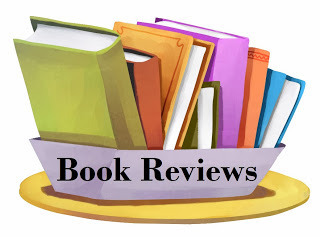
Last week, I gave some pointers on ethics and etiquette for book reviews. Some great discussion followed, especially on the point of whether it's a good idea for writers who know one another to provide honest reviews of each other's books. Traditional reviewers tend to follow the journalistic rule of not writing on topics in which you have a vested interest, like your bff's latest book. But even among traditional reviewers, this rule is sometimes bent by author/reviewers, who often are acquainted in one way or another with the authors of at least some of the books they review. Then there's the question of whether the reading public expects customer reviews to follow journalistic standards.
Mike Spinak makes a case for writers not reviewing one another's books. "There's potential incentive for favorable bias/mutual backscratching," he points out. "It brings all of your reviews into question of being partial/fake if people become aware of the reciprocal reviewing." For his book that came out last year, he contacted several hundred reviewers and got 75 reviews, most from strangers. "There have been several cases when people have asked me to review their books, when I told them I couldn't since they reviewed mine. In a few cases, I've requested people remove (5 star) reviews of my book, because I had already removed theirs."
How to find and approach potential reviewers? Spinak shares his experiences here. On approaching Amazon reviewers in particular, check out this advice from Laura Pepper Wu on The Creative Penn.
Other tips on where and how to get your book reviewed:
The Writer Cube database will point you to reviewers in traditional publications and in blogs. For each, read the submission guidelines carefully. Most traditional publications only review print books. They generally want two advance reading copies (ARCs) at least two months, preferably four months, in advance of publication, with a press release and cover letter included in each. (That’s why my mail-out last week took so long to prepare.) Some won’t take books that are independently published. Some receive upwards of 60,000 submissions a year, so the odds that your book will get reviewed are slim. Publishers Weekly and Kirkus both have programs that allow independent publishers to commission reviews of their books, though again there’s no guarantee that these reviews will get published. If you belong to the Independent Book Publishers Associaton (IBPA), you can get substantial discounts.Through Net Galley, you can make your digital ARCs available to tens of thousands of potential reviewers, in theory at least. The ARCs are secure and the reviewers are vetted. I’m not sure about discoverability on Net Galley, though, which is why I’m considering Story Cartel as a substitute in my launch plans. IBPA members also get discounts on Net Galley.Story Cartel sets up a free download of your book for three weeks. There’s no charge, but you have to offer an incentive for reviewers—either free print copies of your book, or Amazon gift cards. Reviewers have an extra week beyond the download period to post their reviews, which enters them in the giveaway. Email addresses of the potential reviewers are shared with the authors. A similar service with a different angle is Rooster Cube. For $67 (none of which goes to reviewers) they share free electronic copies of your book with a cadre of reviewers interested in your genre until the book has ten reviews.On Goodreads and Facebook are review groups where you can announce that your book is available for review. Book reviews can be part of your blog tour. Use Writer Cube and Google to find bloggers to approach. If a vendor doesn’t allow pre-orders, consider a soft digital launch of your book (up to a month in advance of your hard launch) to allow time for reviewers to post their reviews.Your beta readers can be your best reviewers. Email them at launch with more profuse thanks and a gentle request, with links and a copy of their most quotable comments to make posting easy.Consider review alternatives like author interviews. Don’t forget about specialty groups. Example: 49 Writers, which offers a “Spotlight on Alaska Books” feature free of charge to writers with an Alaska connection.
Published on December 17, 2013 08:00
Book Birthday!
Happy Birthday to my latest book, https://www.goodreads.com/book/show/5...! Thanks to West Margin Press for bringing it into the world and to authors C.B Bernard, Bill Streever, Gary Krist, Caroline V
Happy Birthday to my latest book, https://www.goodreads.com/book/show/5...! Thanks to West Margin Press for bringing it into the world and to authors C.B Bernard, Bill Streever, Gary Krist, Caroline Van Hemert, and Kim Heacox for their endorsements!
...more
- Deb Vanasse's profile
- 39 followers



